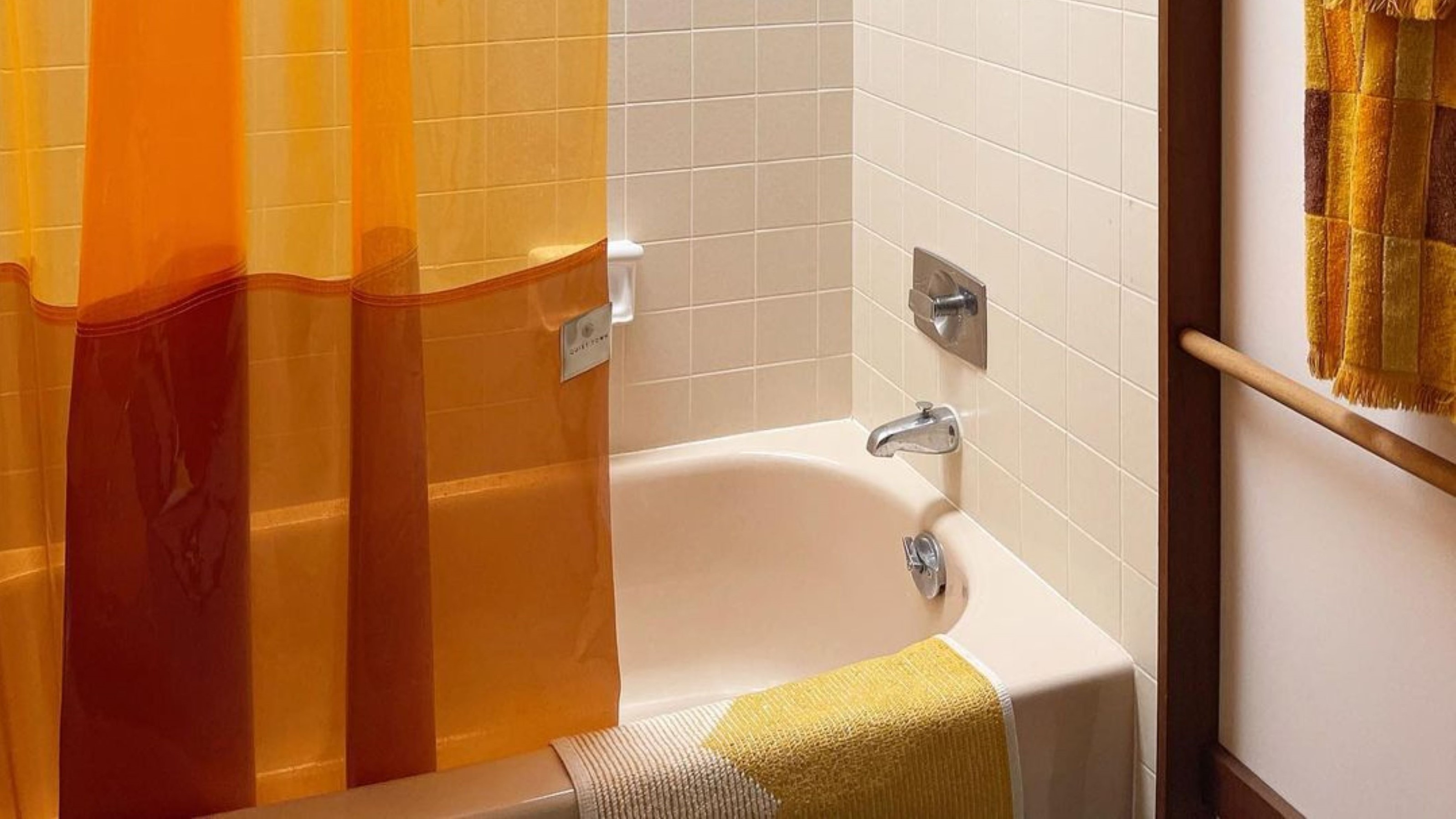
Sure, cleaning your bathroom can be a drag, especially if you don’t clean it regularly. If you think cleaning a toilet, sink, or bathtub is a whole ordeal, then you probably haven't ticked off everything on your bathroom cleaning checklist. A shower curtain is one of the heftiest items to clean, especially if it’s sprinkled with mildew and various stains.
With this in mind, there’s no need to throw away a stained shower curtain, especially if it’s one of your favorite bathroom accessories. It might look a little scary but it's totally treatable. We spoke with cleaning expert Hannah Shaw who gave us the real deal behind wiping down all the nasties from your shower curtain and how to make it sparkle and shine post wipedown.
Good to know
Time: 20 minutes
Difficulty: Easy
Helpful hints: When working with heavy-duty chemicals, it's important that you have protective gear like rubber gloves, a mask, and safety glasses.

Here's what you'll need
- Mold removing spray — RMR-86 Instant Mold and Mildew Stain Remover Spray is Amazon's Choice
- Rubber gloves — everyone deserves a set of pastel rubber gloves (Amazon has it)
- Safety glasses — This cool set on Amazon will come in handy
- Microfiber cloth — Our team loves this set from Amazon)
How to get mold off a shower curtain
Step 1: Prep your bathroom area
Before you dive into scrubbing your shower curtain, you need to prep the space. Shaw notes that safety is paramount when using strong cleaning products, so keep this in mind when cleaning your shower curtains. Ensure the area is well-ventilated and keep children or pets away. Also, ensure any other nearby fabrics, soft furnishings, or furniture is suitably covered.
Step 2: Get your protective gear on
Shaw mentioned that it’s easy to forget that cleaning products are very strong and designed to do the job incredibly well. With this in mind, put on your rubber gloves and safety glasses before starting to clean.
Step 3: Spray and treat your shower curtain
Now it's time to tackle the mold. Shaw always sprays the remover onto the affected area and waits for around five minutes for the mildew and mold to disappear. For more heavily affected areas, she says a longer soak time may be required (try 10 to 15 minutes). Check the label of the particular mold-removing spray you've chosen to ensure it has enough time to do the work.
Step 4: Rinse your curtain and allow to dry
Once the mold and mildew have disappeared, it is time to rinse off the areas you have treated. Shaw says this could be done in several ways, but whatever is safest and most suitable for you works fine. If you have left the shower curtains hanging and treated them in place, she advises rinsing them off with cold water until they are clean. If you have treated the curtain in a solution, you can also stick them in a quick washing machine cycle. Of course, Shaw says to check the curtain care label and washing machine manufacturer instructions before doing so.
FAQs
Why do shower curtains get moldy?
Bathrooms tend to be a breeding ground for mold and mildew because of the humid and moist environment, says Shaw. Even with the best efforts of using an extractor fan and keeping your bathroom clean, sometimes that pesky mold and mildew still find a way to grow.
What are mold and mildew?
Mildew is a type of early-stage mold, which is easier to treat and less dangerous than mold, explains Shaw. Many people would usually use a bleach-based product or mix of this type to treat their affected areas. Be sure to check the concentration of bleach and active chlorine to ensure it actually treats the mold.







